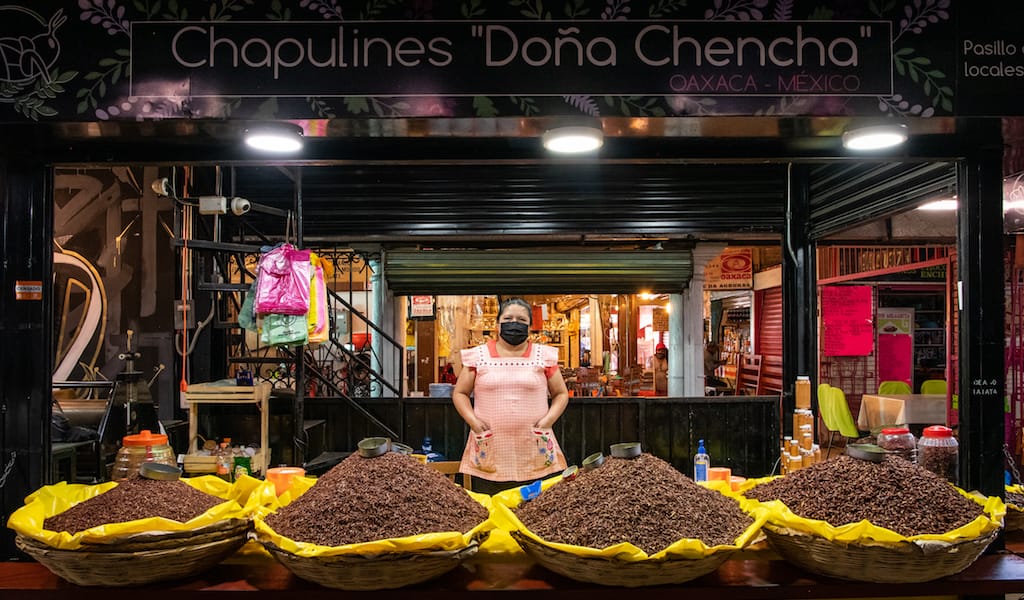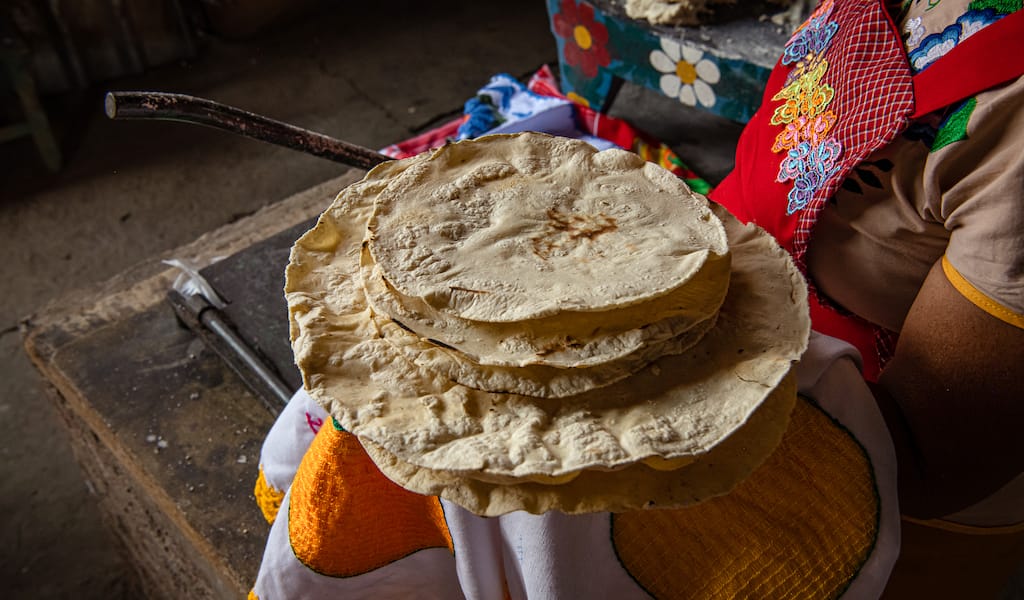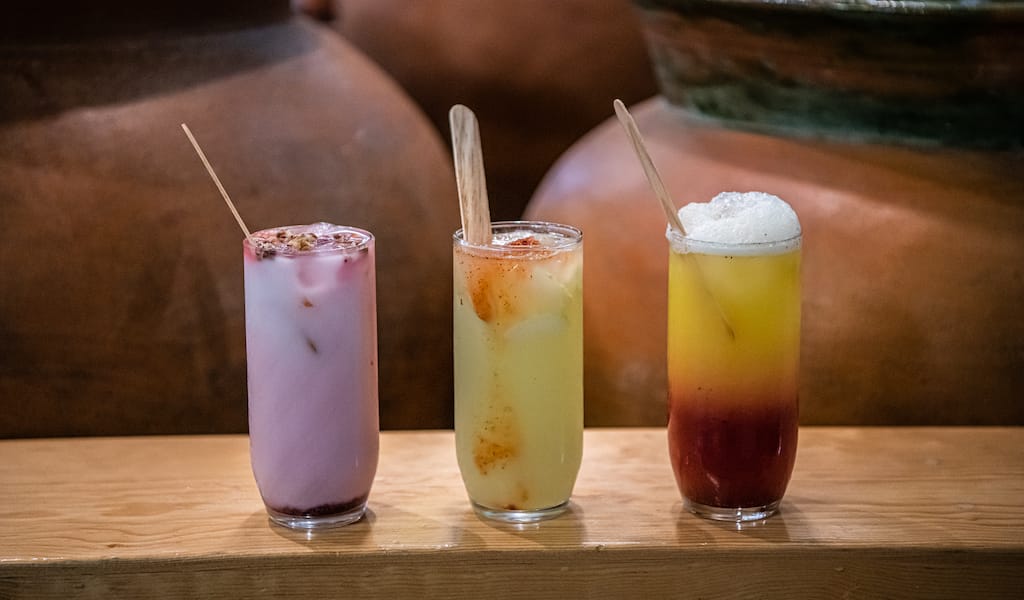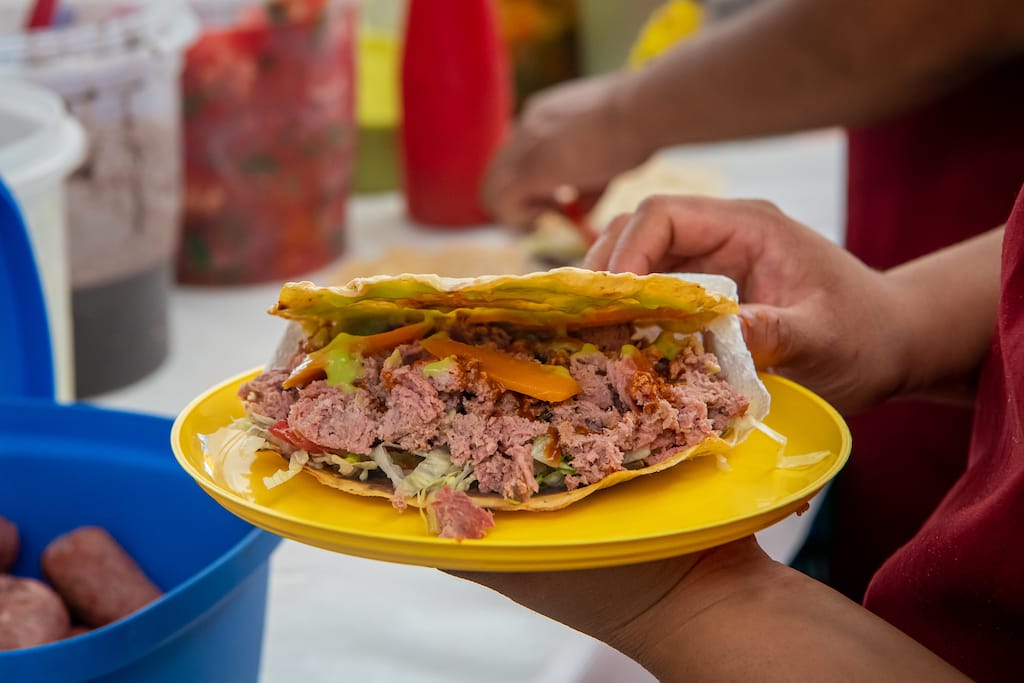Some of my strongest childhood memories are of warm afternoons spent at my grandparents’ garden in Oaxaca, sitting around a big table eating all sorts of snacks. My grandfather would ask all the cousins to line up, close our eyes and open our hands, into which he would place a “special candy.” Then came the challenge: “I will give 10 pesos to the first one who eats the candy without opening their eyes.”
Little did we know that these so-called “special candies” were chapulines (grasshoppers), little insects with tiny legs and a tangy flavor. Our grandfather’s jokes introduced us to a world of challenging flavors and textures that eventually became synonymous with home, where we were surrounded by delicious food and innocent laughter. And they started my love affair with these bright red insects, tiny rubies that are sure to be found on any proper Oaxacan table.
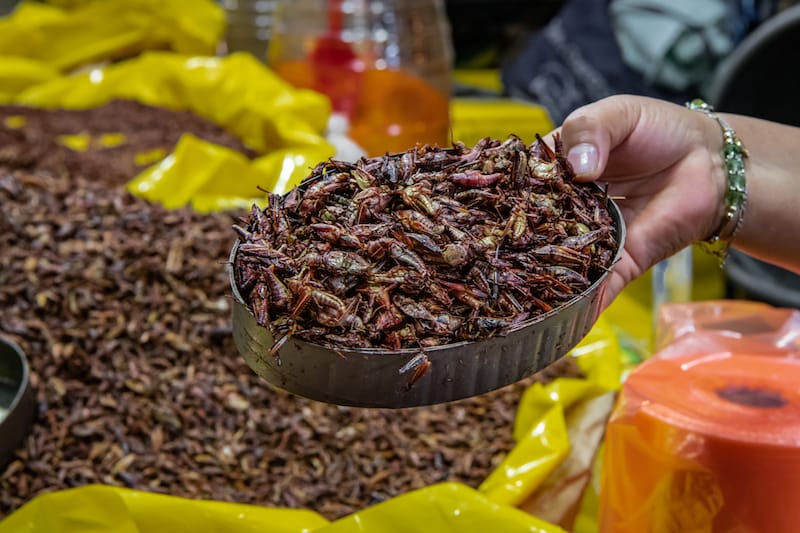
Of the many foods endemic to Oaxaca, the grasshopper is one of the area’s most representative ingredients. While it may not play a starring role in many of the local dishes, its prominence today reflects the survival of ancestral culinary traditions. Before the Spanish brought cattle, the original inhabitants of Mexico got their protein mainly from ducks, turkeys, wild pigs, fish and different kinds of insects. Chapulines were abundant and reliably available, as they could be cooked, seasoned, dried and stored for leaner times.
Found throughout alfalfa and cornfields from June to October, chapulines are born with the first rains. They are harvested using special nets, strategically set to catch these little insects as they hop from plant to plant. “The babies are caught in June, the small-medium and medium-sized ones are collected between July and August, and the medium-large and large ones in September, October and sometimes even in November,” explains Inocencia Mendez Martin, the ultimate authority when it comes to chapulines.
Of the many foods endemic to Oaxaca, the grasshopper is one of the area’s most representative ingredients.
Inocencia is the owner of Chapulines Doña Chencha, a spellbinding 30-year-old stall stocked with chapulines of all sizes, located in Oaxaca City’s Central de Abastos market. “I was 22 years old when I started selling vegetables and chapulines. I only had a tiny basket of them, but ironically, this was the product I sold the most, so I decided to focus only on them [chapulines] and expanded my offerings,” she tells us. It was by no means an easy path – she worked hard to gain her grasshopper knowledge. “I started asking relatives [about chapulines] and was introduced to farmers from different parts of Oaxaca. They started bringing all sorts of sizes, and I became an expert. I learned how to differentiate between the ones that have been caught at the right moment and processed correctly and those that were stale or overly seasoned,” she says.

It’s astounding how many details must be taken into account when selecting for high-quality chapulines. The cooking process is relatively simple: After being caught, chapulines are washed and cooked in water with salt, lime juice and garlic. “The flavor is hard to explain, but I would say they have a herbal taste,” says Inocencia. The seasoning should be quite mild because the aim is to merely amplify their subtle natural flavor. It’s a bad sign if they are too salty, acidic or spicy, since vendors will sometimes overseason the insects in order to hide a sour or bitter flavor, which means they weren’t dried well or were caught too late in their maturity cycle.
Texture-wise, chapulines should be crunchy and dry. “Too much moisture will almost certainly guarantee mold and we don’t want that. Also, it makes the chapulines soggy, and this crunchy texture is precisely what we like about them,” Inocencia explains. “I remember when I was a girl and loved to take a handful of chapulines into a fresh warm blanda [tortilla], roll it up and feel the crunchiness of the chapulines against the tenderness of the sweet corn dough. That’s the way I like my grasshoppers. Sometimes I even turn the volume up a bit more and fry them with chile until they are like chicharrines [crisps/chips],” she adds, her eyes smiling above her mask.
Doña Chencha (as Inocencia is called by her family and clients) likes her insects straight, just like most Oaxacans do. Wherever we go, be it a bar, a restaurant or a family gathering, chapulines are served in bowls for people to either snack on or to sprinkle on a guacamole taco or a quesillo tostada (crispy tortilla). Chapulines are for tacos or tostadas what grated parmesan is for pasta; they upgrade any dish with their herby and slightly acidic aftertaste. And although the simplicity of their preparation and consumption goes against the general perception that Oaxacan food is elaborate, chapulines reflect the core principle of our food, namely that it is natural, healthy and local, sourced straight from the fields.
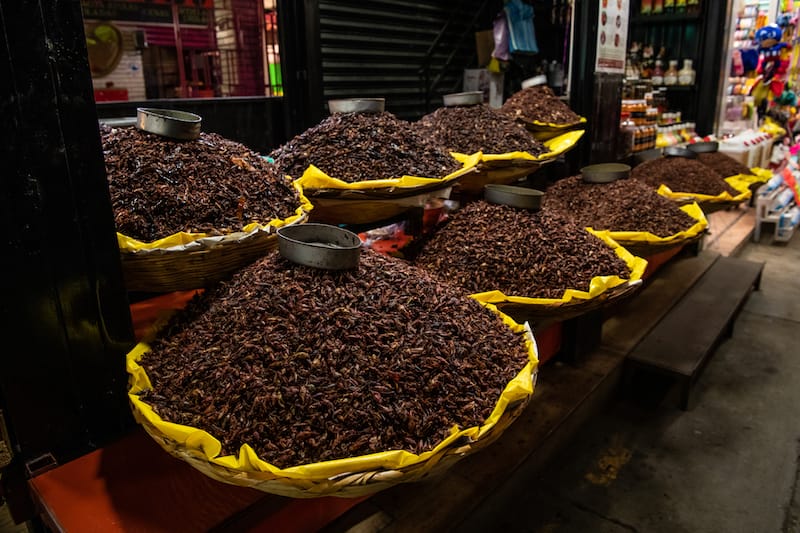
For all these reasons, the demand for chapulines is expanding well beyond rural areas and local households. More and more people are starting to see chapulines as a smarter and more sustainable alternative to animal proteins. Several nutritional studies show that the protein content in grasshoppers ranges from 50 to 75 percent (for comparison, the protein content of cooked, lean beef is around 25 percent); the insects also have a high level of minerals and antioxidants. “When I was growing up, there was this belief that chapulines were a great source of stamina for anyone who would eat them, but some people in the city saw them as food for the poor or found them a bit repulsive,” recalls Inocencia.
“This is changing, now you can find chapulines in omelets, salads or in dishes in the most sophisticated restaurants. Also, if I think of my clients over the last 10 years, they are from all walks of life, as well as from different parts of the country and the world. We can finally say it has become a very democratic food,” she adds.

She’s right – grasshopper fever is indeed rising. Chefs, cooks and street food vendors in Oaxaca are reinterpreting chapulines in new and unimaginable ways. For example, some vendors selling esquites (cups of boiled corn served with different ingredients) now include regular chapulines, chapulin-chile powder or even chapulin-infused mayo as part of their toppings options.
“I started from zero with chapulines and now they are my life. My son became a chef because he inherited my passion for grasshoppers. My daughter studied economics because she grew up seeing her mother building a family just by selling these tiny insects,” says Inocencia, as she points to one of the baskets brimming with baby chapulines. And just like Inocencia and her children, I became a culinary explorer because of my grandfather’s grasshopper pranks.
It’s a tale as old as time, and one that will surely repeat again and again, in different contexts and with different characters – perhaps a couple of friends searching for new ingredients or a group of people traveling together will try grasshoppers, only to find themselves devoted to these insects that are a source of both sustenance and pleasure.
Editor’s note: Our recurring feature, Building Blocks, focuses on foods and ingredients that are fundamental to the cuisines we write about.
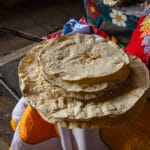 February 27, 2024 Building Blocks
February 27, 2024 Building Blocks
Every time we travel outside of Oaxaca, we get something we call “the tortilla blues.” […] Posted in Oaxaca July 5, 2023 Aguas Casilda: Fresh Take
July 5, 2023 Aguas Casilda: Fresh Take
I first met Socorro Irinea Valera Flores years ago, when Oaxaca was not yet under the […] Posted in Oaxaca May 10, 2022 Salchicha Ejuteca
May 10, 2022 Salchicha Ejuteca
The history of Oaxacan food is deeply linked to the concept of adaptation. Our culinary […] Posted in Oaxaca
María ÍtakaJalil Olmedo
Published on February 26, 2021
Related stories
February 27, 2024
OaxacaEvery time we travel outside of Oaxaca, we get something we call “the tortilla blues.” Even if we move around inside of Mexico, particularly in the biggest cities, we cannot help missing the sweet aroma and feel of a warm tortilla almost melting in our hands. Sure, we might run into decadent tacos filled with…
July 5, 2023
OaxacaI first met Socorro Irinea Valera Flores years ago, when Oaxaca was not yet under the spotlight of the culinary industry. As part of a high school project in which I had to map Oaxaca’s most “heartwarming” spots for food and drinks, I visited the iconic Aguas Casilda, a nearly 100-year-old storefront that has been…
May 10, 2022
OaxacaThe history of Oaxacan food is deeply linked to the concept of adaptation. Our culinary identity has many chapters: the Mesoamerican native period, the colonial reign of Nueva España and the Mexico of the 20th century, which received another wave of immigrants who brought their gastronomic traditions and let them combine with the native and…







































